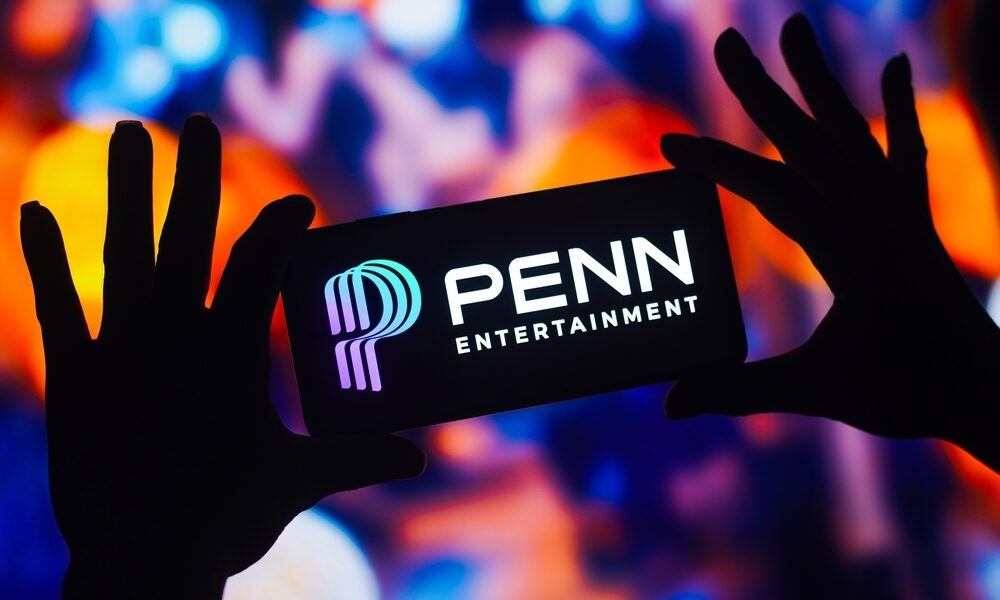Penn Entertainment and its embattled ESPN Bet subsidiary received boosts from J.P. Morgan analyst Joseph Greff in a December 12 investor note. He raised his rating on Penn stock from Neutral to Overweight. Greff also ratcheted his price target up from $19 per share to $27 each.
Greff admitted at the top of his report that his take was contrarian. “We presently see a favorable risk-reward, with sightline to a bottoming of its regional land-based-casino cashflow generation,” he wrote, emphasizing Penn’s terrestrial casino business.
Further criteria for optimism were $850 million in capex investments in four Penn casinos (M Resort, Hollywood Columbus, plus new casinos in Joliet and Aurora, Illinois). These he expected would begin generating a double-digit return on investment in the latter half of next year.
The analyst also deemed cash-flow projections for online Penn assets, including ESPN Bet, to be “reasonably set.” He looked forward to a positive return on digital investments in 2026.
“We have long-held the view that some degree of ESPN Bet success is the single biggest driver for the stock, and still see that as the case,” Greff wrote, adding that modest positive return on investment in 12 to 15 months wasn’t reflected in Penn’s share price. He warned that if Penn is unsuccessful in online profitability, it might simply close down those operations and “milk the $60m-ish of market access fees.”
Even allowing for an unsuccessful ESPN Bet, Greff saw Penn as worth $26 per share. (The stock was trading at $20 per share at the time of his report.) He opined that the value could be further elevated with merger-and-acquisition activity and asset sales.
“Net-net we see a favorable fundamentally driven risk-reward given improving free cash flow,” given the dropoff in capital expenditures two years hence, as well as the use of cash flow to deleverage the company.
Greff estimated that Penn is already throwing off $525 million a year in free cash flow. He added, “The share price has (meaningfully) underperformed its peers and the SPX by an average of 45% for each of the last four years.” The only greater underperformer during that time was ESPN Bet competitor DraftKings, while Station Casinos was the most significant outperformer.
Greff defended his thesis as “highly achievable.” He stood by estimates of $1.7 billion cash flow next year, with $1.9 billion from land-based casinos diluted by $50 million of online losses and corporate expenses of $118 million.
The J.P. Morgan analyst further anticipated $350 million in 2025 free cash flow, offset by $550 million outstanding in construction expenses. Looking ahead to 2026, he saw cash flow growing to $1.9 billion, including an $80 million online profit, less $121 million in corporate expenditures. In that scenario, free cash flow would swell to $526 million and capex would dwindle in 2026 to $50 million.
For the fourth quarter of this year, Penn expects revenue on the order of $1.3 billion or higher and cash flow in the vicinity of $450 million from terrestrial casinos. Those numbers are predicated on stable consumer activity in gambling and some disruption of revenues at L’Auberge du Lac in Lake Charles, Louisiana, due to a hotel renovation to attract higher-paying guests. New competition in Louisiana, Illinois, and Nebraska is further expected to impact revenues.
Penn strongholds in the early weeks of the fourth quarter were Michigan (Hollywood Greektown), Indiana (multiple casinos), and St. Louis, Missouri (Hollywood St. Louis and River City). Coin-in was reported to be up 3.6 percent. Seven Penn-owned sports books had been rebranded as ESPN Bet as well.
Online, the projected negative return on investment ranged from $70 million to $120 million, including a $35 million loss from player-friendly sports outcomes in October. Greff reported that OSB holds were up “meaningfully” in November, with Iowa seeing 113 percent revenue growth, while Maryland leapt 99 percent year over year and New York 53 percent.
Penn continues to pin its OSB hopes on the integration of ESPN Bet into the overall ESPN application, theoretically broadening user access. These, Greff related, “have contributed to a higher parlay mix and sportsbook hold during the 3Q24.”
Greff appeared to approve of Penn’s financing mix for its four ongoing casino projects. The $850 million outlay includes $225 million cash on hand and its mitigated by $50 million from the City of Aurora as well as $575 million from asset owner Gaming & Leisure Properties (GLPI).

GLPI’s commitment broke down as $225 million toward $360 million Hollywood Aurora, $130 million of new Hollywood Joliet’s $185 million budget, $150 million for a $205 million M Resort hotel tower (its second), and all $100 million toward Hollywood Columbus’s first hotel tower.





